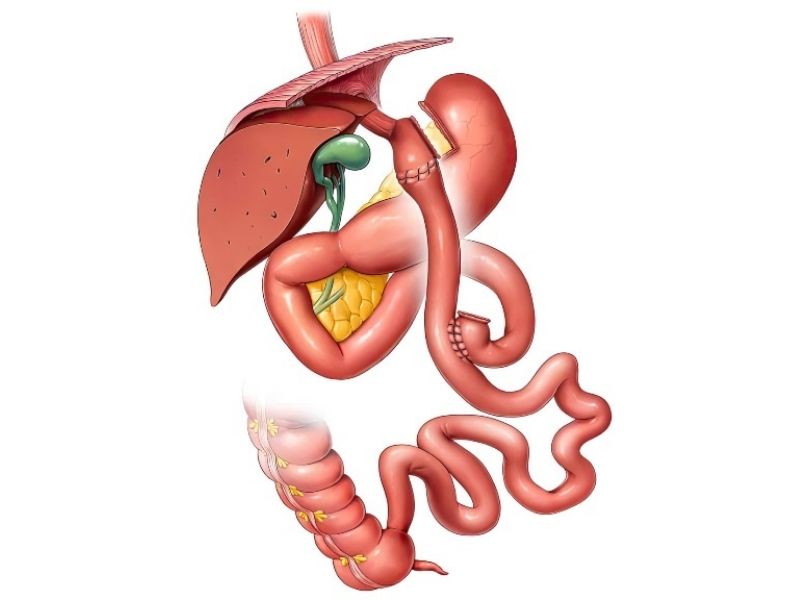Weight loss surgery is also known as bariatric and metabolic surgery. Bariatric surgery is done when diet and exercise do not work or when you have serious health problems because of your weight. You also need to make permanent healthy changes to your diet and exercise regularly to help ensure the long-term success of bariatric surgery. In addition to weight loss, bariatric surgery is also very effective in treating diabetes, high blood pressure, sleep apnoea and high cholesterol. These surgeries (stomach reduction, gastric bypass) also have the ability to prevent health problems such as stroke (stroke), cancer, metabolic syndrome (insulin resistance) that can be seen in advanced ages. These advantages enable individuals with obesity to have a better quality of life and a longer life.
İçindekiler
Today's metabolic and bariatric operations are among the best-studied treatments in modern medicine for decades. They are performed through small punctures using minimally invasive (no abdominal incisions) surgical techniques (laparoscopic and robotic surgery). These advances allow patients to have a comfortable experience with less pain, fewer complications, shorter hospital stays and faster recovery. These surgeries are extremely safe and complication rates are lower than common surgeries such as gallbladder surgery, hysterectomy and hip replacement.
The aim of these operations is to treat obesity-related diseases and to improve the quality of life of the patient by making the patient lose weight. Today, the most common weight loss surgery in this field is stomach reduction, also known as sleeve gastrectomy.
Restrictive Procedures

Sleeve Gastrectomy / Sleeve Gastrectomy
It is a procedure in which 75-80% of your stomach is removed, leaving a banana-shaped and banana-sized section that is closed with surgical staples. The operation reduces the stomach capacity and makes you feel full more quickly. By removing the part of the stomach that produces most of the ‘hunger hormone’, the appetite is suppressed for a long time and you lose weight comfortably. The resulting hormonal effect reduces hunger, increases satiety and enables the body to reach and maintain a healthy weight and control blood sugar.
Compared to other surgeries, it is simpler and the hospital stay is shorter. Stomach reduction surgery does not change the functional anatomy. The risk of malnutrition (malnutrition) is low. It is also effective in the treatment of Helicobacter Pylori infection, which causes conditions such as heartburn and pain.

Laporoscopic Adjustable Gastric Band
It is an old method. The surgeon places a ring-shaped band at the top of your stomach to create a pouch with a volume of 30 mL. This band is a band whose size can be adjusted by injecting fluid into its interior. Like sleeve gastrectomy and gastric bypass surgery, the gastric band allows you to feel full by eating small amounts of food. The surgeon places a small device called a port, which is a continuation of the band, under your skin. The width of the band is adjusted by injecting fluid into the port. You will need several follow-up visits to adjust the size of the band opening.
Today, adjustable gastric band surgery is less commonly performed in the United States compared to gastric sleeve or gastric bypass because it is associated with more complications compared to other methods. In the past, the band had to be removed in most patients due to intolerance. Today, this method is used in very, very rare cases.
Combined (Restrictive and Absorptive) Procedures

Roux-en-Y Gastric Bypass
The surgery, also commonly known as gastric bypass, is done in three steps.
- Step: The surgeon staples your stomach, creating a small pouch at the top. This pouch is about 30 mL in volume and is about 10 per cent of your stomach. The staples make your stomach much smaller, so you eat less because you feel full more quickly.
- Step: The surgeon divides your small intestine into an upper and lower part and connects the lower part directly to the small stomach pouch. Food will bypass most of your stomach and the upper part of your small intestine, so your body will absorb fewer calories.
- Step: The surgeon connects the upper part of the small intestine to a new place further down the lower part of the small intestine. This allows digestive fluids from the stomach to flow from the bypassed part of the small intestine to the lower part of the small intestine so that food can be fully digested.
Gastric Bypass changes hormones, bacteria, appetite and other mechanisms in the gastrointestinal tract that can affect metabolism. Gastric bypass is difficult to reverse, but a surgeon can do so if medically necessary. Macro- and micronutrient deficiencies can occur in the long term if care is not taken, so lifelong replacement is essential. Dumping syndrome may be encountered.

Duodenal Switch with Biliopancreatic Diversion
The surgical procedure, also called mixed surgery, involves two separate procedures. The first procedure is a sleeve gastrectomy. The valve at the connection between the stomach and the intestine is preserved, so that the risk of dumping syndrome is reduced. The second procedure is to divide the small intestine into two different pathways. With the second procedure, food bypasses a large part of the small intestine and passes through a short part of it. Thus, the digestive enzymes cannot interact with the food too much and the food is digested very little. As a result, it reduces the number of calories and the amount of nutrients absorbed.
This type of surgery allows you to lose more weight compared to the surgeries described above. However, it is also the most likely to cause problems with the surgery and a lack of vitamins, minerals and protein in your body. It is mostly preferred in revision surgery.
Bibliography
American Society for Metabolic and Bariatric Surgery (2021, Mayıs). Bariatric Surgery Procedures. https://asmbs.org/patients/bariatric-surgery-procedures/
National Institute of Diabetes and Digestive and Kidney Diseases (2020, Eylül). Types of Weight-loss Surgery. https://www.niddk.nih.gov/health-information/weight-management/bariatric-surgery/types#gastric-sleeve
Mayo Clinic (2024, Temmuz). Bariatric Surgery. https://www.mayoclinic.org/tests-procedures/bariatric-surgery/about/pac-20394258
Singh, D., Laya, A. S., Clarkston, W. K., & Allen, M. J. (2009). Jejunoileal bypass: a surgery of the past and a review of its complications. World journal of gastroenterology, 15(18), 2277–2279. https://doi.org/10.3748/wjg.15.2277










